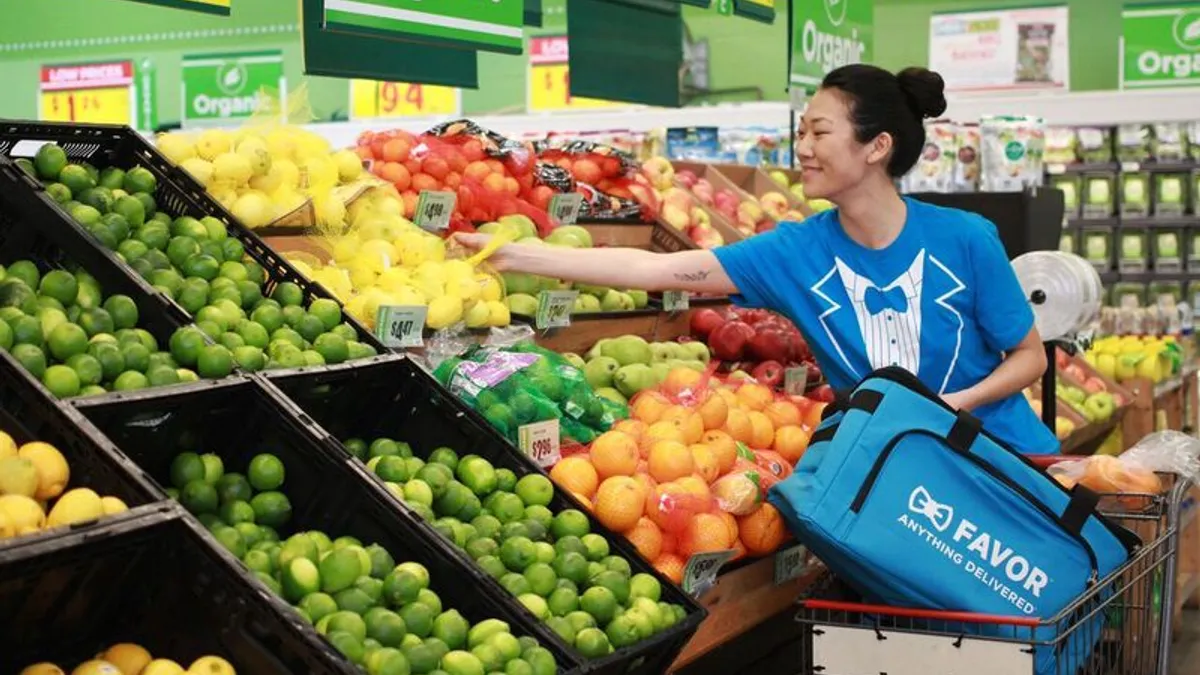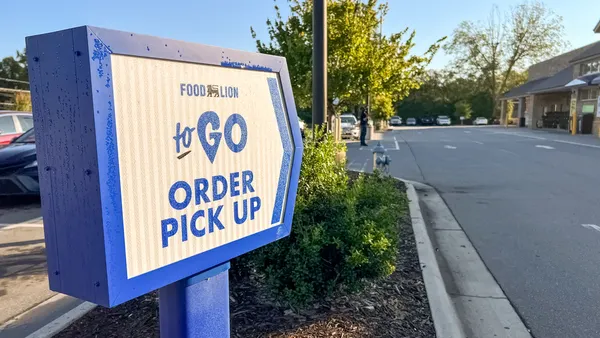Dive Brief:
- H-E-B, Whole Foods and Aldi perform best in delivery among grocery brands, with 95% or greater accuracy rates on orders, the first e-commerce experience report from market research firm Ipsos has found.
- For in-store and curbside pickup, Walmart, Target, Sam’s Club and Kroger ranked highly in the report, with 86% of Walmart locations audited containing visible signage for pickup areas and 98% of Target locations visited having online grocery orders ready for in-store pickup on time. The report surveyed 2,000 Americans on their shopping habits and perceptions then conducted 150 "mystery shops" for each brand.
- In-store and curbside pickup has grown for 78% of shoppers surveyed since the onset of the coronavirus pandemic, and 69% said they expected to continue using the services after the public health crisis passes, indicating the importance of streamlined interfaces and clear pickup signage for grocers, Ipsos noted.
Dive Insight:
With the top performing grocers meeting accuracy rates above 95%, precision in grocery delivery operations are a critical component for grocery brands to stay competitive in the off-premise market.
For many traditional grocers, adapting has been a challenge since March, and tech-savvy services have attempted to fill the gap. One of the most difficult aspects of accurately fulfilling e-commerce orders for grocers is predicting what is in stock, particularly in periods of high demand. Instacart, for example, altered its machine learning models this spring to predict grocery stocks every hour, rather than every three hours, in order to improve stock accuracy. Meanwhile, autonomous vehicle delivery services have accelerated their grocery delivery pilot programs, like Nuro, which has a Houston-based pilot with Kroger.
Having orders ready on-time is also important in click-and-collect, and to that end numerous grocers have added technology like geofencing that helps track and communicate with customers. The Ipsos survey indicated that proper signage at pickup locations indicating where customers can gather their orders is also important. The firm said that while retailers like Walmart do a good job here, 27% of locations it recently studied had poor signage or pickup areas that were difficult to locate.
For all grocers, evaluating how they use their aisles and backrooms to fulfill online orders has become a key concern and has exposed logistical issues with store-centric models. Some grocers, including Kroger and British provider Ocado, have ramped up construction of automated sheds to complete vast order quantities. On a smaller scale, e-commerce experts advise allocating space in stores to fulfilling online orders and exploring off-site dark store operations.
Many grocers have begun to take the long view, integrating new delivery systems into their operations. Last month, Whole Foods opened its first permanent dark store in Brooklyn, while H-E-B announced its partnership with warehouse automation company Swisslog to expand its online operations at automated micro-fulfillment centers. Aldi, another top performer in delivery order accuracy in the Ipsos report, has an expanding partnership with Instacart.













